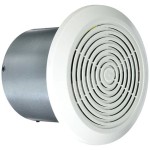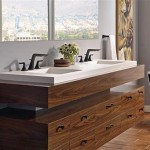Chrome Wall Shelf: A Stylish and Functional Bathroom Addition
The chrome wall shelf represents a popular and practical storage solution for bathrooms of various sizes and styles. Its durable construction, reflective finish, and ease of maintenance contribute to its widespread appeal. This article explores the key attributes, benefits, installation considerations, and maintenance practices associated with chrome wall shelves in bathroom environments.
Durability and Material Properties
Chrome, a lustrous and hard-wearing metal, is typically applied as a plating over a substrate material, such as steel or brass. This plating process, known as electroplating, involves depositing a thin layer of chromium onto the base metal through an electrolytic process. The resulting chrome finish offers several advantages for bathroom applications. First, it provides excellent resistance to corrosion and rust, crucial for environments characterized by high humidity and frequent exposure to water. Second, chrome is inherently resistant to scratching and abrasions, ensuring the shelf maintains its aesthetic appeal over time. Third, the substrate material, often steel, provides significant structural strength, enabling the shelf to support a variety of bathroom essentials, from toiletries and towels to decorative items.
The gauge, or thickness, of the steel used in the shelf's structure directly impacts its weight-bearing capacity. Thicker steel translates to greater strength and stability. Consumers should consider the intended use of the shelf and select a product with a sufficient weight rating to accommodate the anticipated load. Furthermore, the quality of the chrome plating process is paramount. A poorly executed plating job can result in premature peeling, flaking, or tarnishing, diminishing the shelf's longevity and aesthetic value. Reputable manufacturers adhere to stringent quality control measures to ensure a uniform and durable chrome finish.
Some chrome wall shelves incorporate additional materials, such as tempered glass or acrylic, to create tiered designs or decorative accents. Tempered glass offers enhanced safety due to its tendency to shatter into small, relatively harmless fragments rather than sharp shards. Acrylic, being a lightweight and shatter-resistant plastic, provides a cost-effective and durable alternative to glass. The selection of these secondary materials should be guided by considerations of aesthetics, functionality, and safety.
Aesthetic Versatility and Design Options
The reflective properties of chrome contribute to its aesthetic versatility, allowing it to complement a wide range of bathroom decor styles. Chrome's neutral tone integrates seamlessly with both cool and warm color palettes, making it a suitable choice for traditional, modern, and minimalist bathroom designs. The shiny surface of chrome reflects light, enhancing the perceived brightness and spaciousness of the bathroom.
Chrome wall shelves are available in numerous design configurations. Single-tier shelves provide a minimalist storage solution, ideal for small bathrooms or for displaying select items. Multi-tier shelves offer increased storage capacity, allowing for the organization of a larger assortment of toiletries and accessories. Corner shelves maximize space utilization in compact bathrooms. Shelves with integrated towel bars provide a dual-purpose solution, combining storage with convenient towel hanging functionality.
The style of the shelf's supports or brackets also influences its overall aesthetic. Sleek, streamlined brackets contribute to a modern, minimalist look, while ornate, decorative brackets add a touch of traditional elegance. Floating shelves, which appear to be suspended without visible supports, create a visually clean and contemporary aesthetic. The choice of bracket style should align with the overall design aesthetic of the bathroom.
Furthermore, the shape and dimensions of the shelf should be carefully considered. Rectangular shelves offer a classic and versatile option, while curved or asymmetrical shelves can add visual interest and personality to the bathroom. The depth of the shelf should be appropriate for the items being stored, ensuring adequate space without encroaching excessively into the bathroom's usable area.
Installation Considerations and Best Practices
Proper installation is critical to ensuring the stability and longevity of a chrome wall shelf. Several factors must be taken into account during the installation process, including the type of wall material, the weight-bearing capacity of the mounting hardware, and the alignment of the shelf.
Before commencing installation, it is essential to identify the type of wall material. Common bathroom wall materials include drywall, plaster, tile, and concrete. Each material requires specific mounting hardware and techniques to ensure a secure attachment. For drywall and plaster walls, it is crucial to locate wall studs, which provide a solid anchoring point for screws. Stud finders are readily available and can be used to accurately locate these structural elements. If studs are not ideally positioned, drywall anchors or toggle bolts can be used to distribute the weight of the shelf over a larger area of the wall.
When installing shelves on tile walls, it is imperative to use specialized drill bits designed for cutting through tile without cracking or chipping. Diamond-tipped drill bits are generally recommended for their durability and precision. The drilling process should be performed slowly and carefully to avoid damaging the tile. After drilling the holes, appropriate wall anchors should be inserted to provide a secure attachment for the mounting screws.
For concrete walls, heavy-duty concrete anchors are necessary to ensure a robust and reliable installation. These anchors are designed to expand within the concrete, creating a strong grip. The selection of the appropriate anchor type and size should be based on the weight-bearing requirements of the shelf.
Regardless of the wall material, it is essential to use a level to ensure that the shelf is installed horizontally. An improperly aligned shelf can detract from the overall aesthetic of the bathroom and may also compromise its stability. Accurate measurements and careful marking of the screw positions are also crucial for achieving a professional-looking and secure installation. It is advisable to consult the manufacturer's instructions for specific installation guidelines and recommendations.
When selecting mounting hardware, it is crucial to choose components that are specifically designed for bathroom environments. Stainless steel screws are resistant to corrosion and rust, making them an ideal choice for humid conditions. The size and length of the screws should be appropriate for the thickness of the wall and the weight of the shelf. It is also important to consider the appearance of the mounting hardware, selecting components that complement the chrome finish of the shelf and the overall aesthetic of the bathroom.
Maintenance and Cleaning Procedures
Maintaining the luster and cleanliness of a chrome wall shelf requires regular cleaning and proper care. While chrome is inherently resistant to corrosion, it can be susceptible to water spots, fingerprints, and soap scum buildup. Regular cleaning helps to prevent these blemishes and maintain the shelf's aesthetic appeal.
The frequency of cleaning will depend on the usage and environmental conditions of the bathroom. In general, wiping down the shelf with a soft, damp cloth every few days is sufficient to remove surface dirt and grime. For more stubborn stains or buildup, a mild soap solution can be used. It is important to avoid using abrasive cleaners or scouring pads, as these can scratch or damage the chrome finish.
After cleaning, the shelf should be thoroughly dried with a clean, dry cloth to prevent water spots. A microfiber cloth is particularly effective for removing water spots and leaving a streak-free shine. For heavily soiled or tarnished chrome, a specialized chrome cleaner can be used. These cleaners typically contain mild abrasives that help to remove stubborn stains without damaging the finish. It is important to follow the manufacturer's instructions carefully when using chrome cleaners.
In areas with hard water, mineral deposits can accumulate on chrome surfaces. These deposits can be difficult to remove with ordinary cleaners. A solution of white vinegar and water can be used to dissolve mineral deposits. The solution should be applied to the affected area and allowed to sit for a few minutes before being wiped away with a clean cloth. After using vinegar, the shelf should be thoroughly rinsed with water and dried.
To prevent future buildup of water spots and soap scum, consider applying a protective coating to the chrome surface. Several commercially available products are designed to create a barrier that repels water and dirt. These coatings can help to keep the shelf looking clean and new for longer periods of time.

Spa Chrome Bathroom Shelf Acccessories

Nameeks Ncb92 By Nameek S General Hotel Wall Mounted Polished Chrome Bathroom Shelf Thebath

Organize It All Chrome 2 Tier Metal Wall Mount Bathroom Shelf 19 In X 20 10 The Shelves Department At Com

Proox 12 72 In W X 4 D 11 3 H Double Glass Wall Mount Bathroom Shelf Chrome Pr12bs8rx918ch The Home

Livingandhome Chrome Wall Mounted Stainless Steel Bathroom Towel Rack With 3 Tier Storage Shelf And Hooks Diy At B Q

Remer Ln20 Bathroom Shelf Lounge Nameek S

Vado Omika Chrome 200mm Bathroom Wall Shelf Omi 185 20 C P

2 Tier Wall Mount Shelving Unit With Towel Rack And Trays Chrome White Danya B

2 Tier Silver Chrome Metal Wall Mounted Bathroom Shelf Organizer With Hanging Towel Rack 17 X 10 22 In Com

Danya B 19 75 In W Wall Mounted Tempered Glass Bathroom Shelf Ha80550 The Home
See Also







